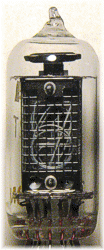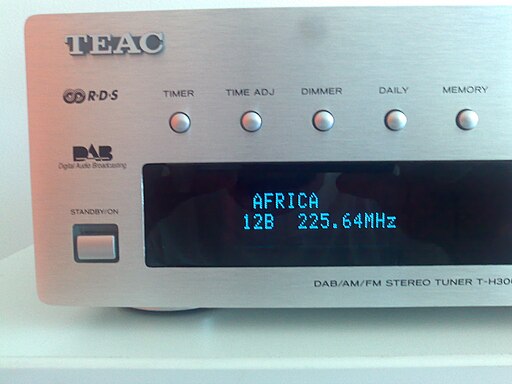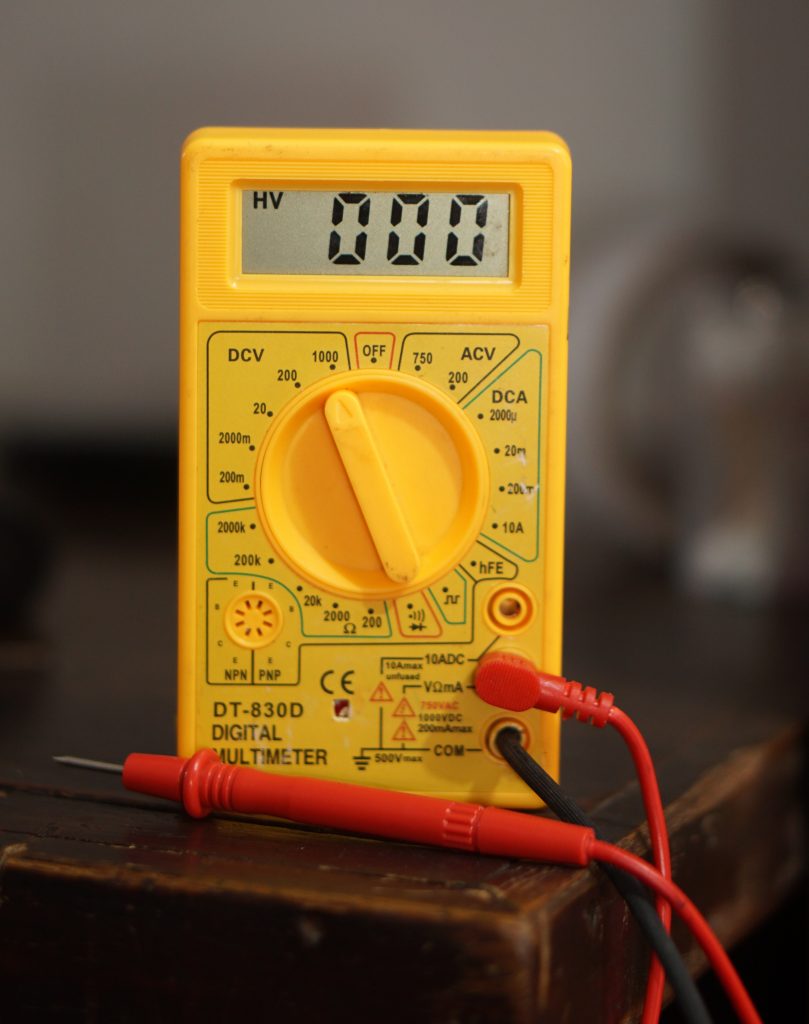When using an analog scale, a pointer swings to the correct characters/digits that are physically on the scale in different locations. Digital readouts, however, must include multiple digits in one location. To see how this is accomplished, we are looking at three different digital display methods: dot matrix, solid character, and bar segments.

Early digital technical equipment used Nixie Tubes for their numeric displays. These tubes worked by using ten transparent in-line wafers enclosed in neon gas. Each individual wafer had electrodes in the shape of numerals. When electrified, these wafers would glow. While the unlit wafers were still able to be seen while others glowed, it did not distract away from the readout. Nixie Tubes were popular and used for years, but the method is expensive and the delicate tubes are prone to breakage.

The Dot Matrix Display
Dot matrix displays became popular in the 1980s/1990s with applications including computers, graphic calculators, and even video games such as the Nintendo GameBoy. Dot matrices work by using small lamps (either miniature incandescent, neon gas plasma, LED, LCD, or phosphorescent) arranged in a block form that allows the lighting of only certain lamps to display a digit. Bigger matrices give clearer images. While the dot matrix is more useful than other methods when alphabetical characters need to be displayed, they require many expensive switching circuits. For example, a 5×7 matrix needs 35 switching circuits.
Overall, the dot matrix display is a simpler method with a good quality image from higher dot density.

The Solid Character Display
The solid character display offers the most realistic readout, but it is the most difficult to attain. These displays use either LCDs or LEDs, which use the same configuration. The LED is a light source, so it gives a much brighter display than the LCD, and can also be much more colorful. The transmissive LCD has its own backlighting, but since its principle is based on variable opacity, the display lighting is less bright. The reflective LCD relies on high ambient light conditions to give a good reflection. With low ambient light, the unit often has to be tilted to a better reflection angle.

The Bar Segment Display
The bar segment display, also known as the 7-segment display, is an inexpensive compromise to the other types. Only 7 switching circuits are needed, and 8 terminals including a decimal point are used to create the digits. After the meter counts the pulses and the BCD codes are interpreted, they are fed to the display drivers which select the proper combination of segments to create the digit.
The resulting decimal digit display is illustrated for each segment code in the geometry in which it would appear. For example, to get a number 4 display, the display driver would have to switch on segments 2,3,7, and 6.
The bar segment display method uses liquid crystal display (LCD) for illumination and has become the most popular display method for digital multimeters. LCD displays come in two types: one becomes opaque when it is biased, and the other reflects light when it is biased. LCDs use the bar segment display method, and. The liquid crystal display (LCD) does not generate light, but uses ambient light with its varying optical qualities to display. The transmissive LCD has its opacity varied when electrified; the reflective LCD becomes more reflective when it is energized.
Illuminating The Displays
A display can be illuminated by a variety of phenomena, including; incandescence, plasma (ionized gas), fluorescence, phosphorescence, electroluminescence, or ambient light.
Incandescence works in the same way as an ordinary light bulb, with a heated filament. Mini incandescent lamps can be used in a dot matrix, but too much heat is generated, and the lamps will often fail. The neon lamp was used in Nixie lamps, and is the most popular of the gas plasma or ionization lamps. Miniature neon lamps can be used in the dot matrix or even the bar segments, but higher voltages are needed to trigger gas ionization. Fluorescence uses a combination of plasma and phosphorescence. An ionized gas, such as mercury vapor, emits ultraviolet radiation, which strikes a phosphorescent coating to produce light. Straight phosphorescence uses an electron beam to strike a coated screen to produce light in a dot matrix, raster (line), or bar segment configuration.
Electroluminescence is light being emitted by a solid carrying an electric current. The light-emitting diode (LED) is a good example of this. It is a semiconductor PN junction diode biased in the forward (high current) direction, which dissipates energy in the form of light.
Additional Information







